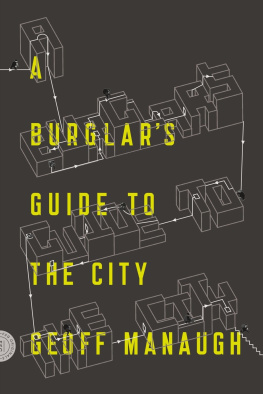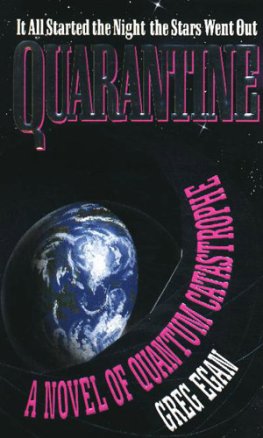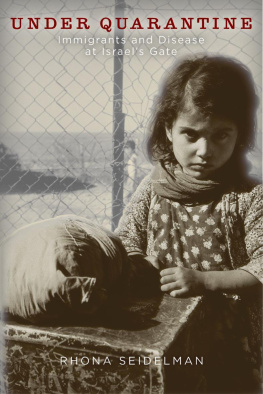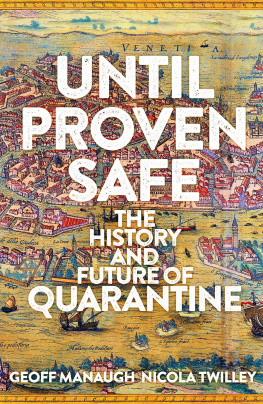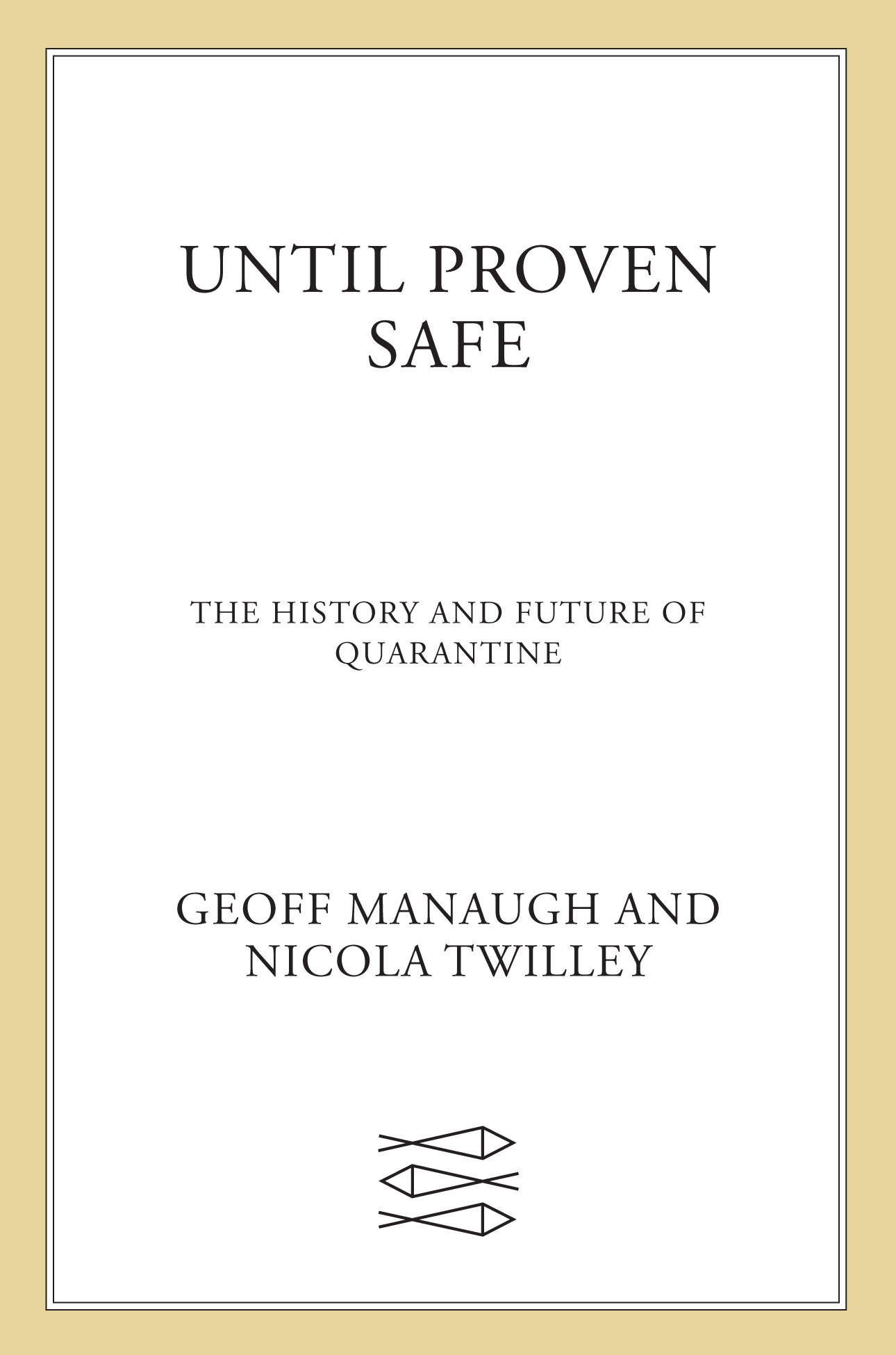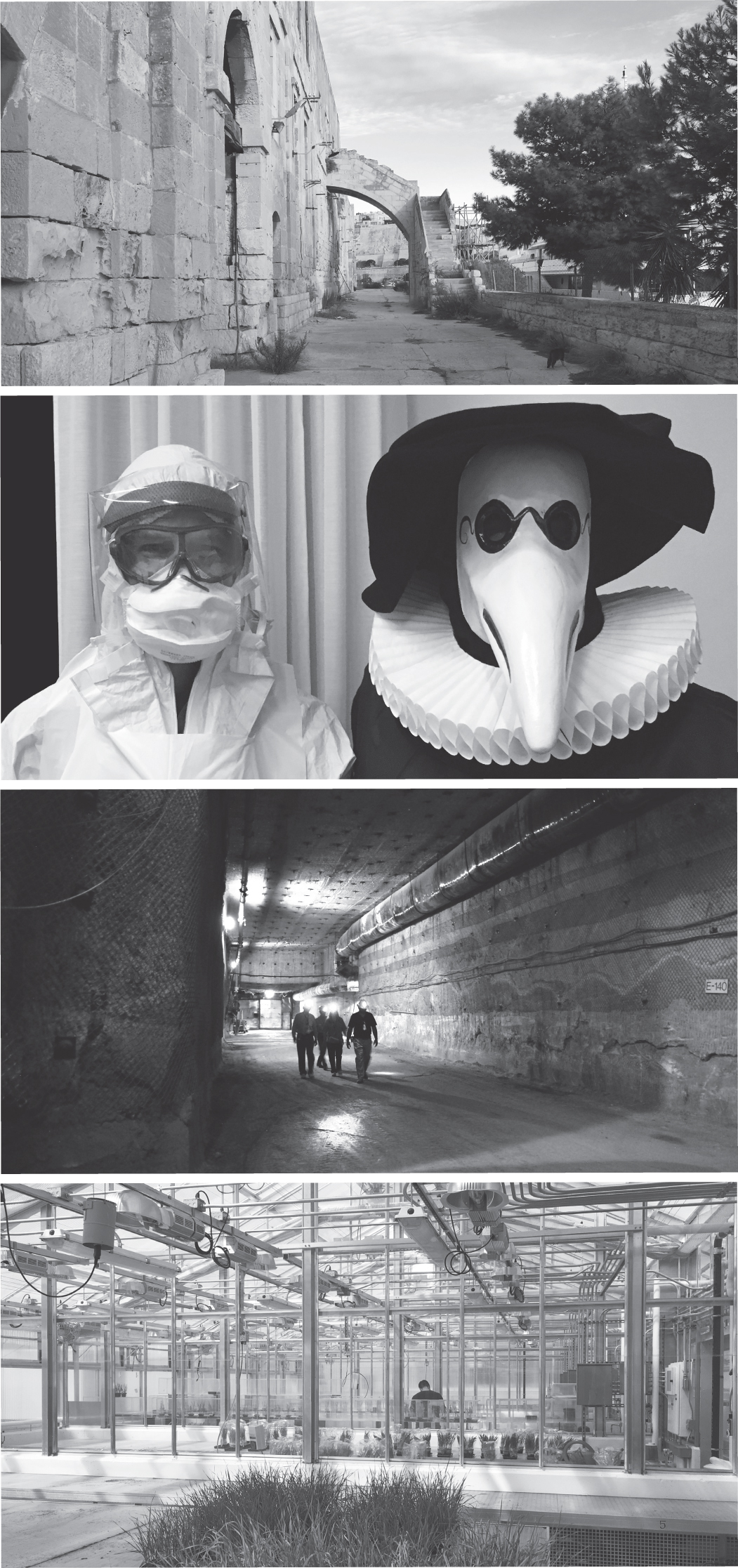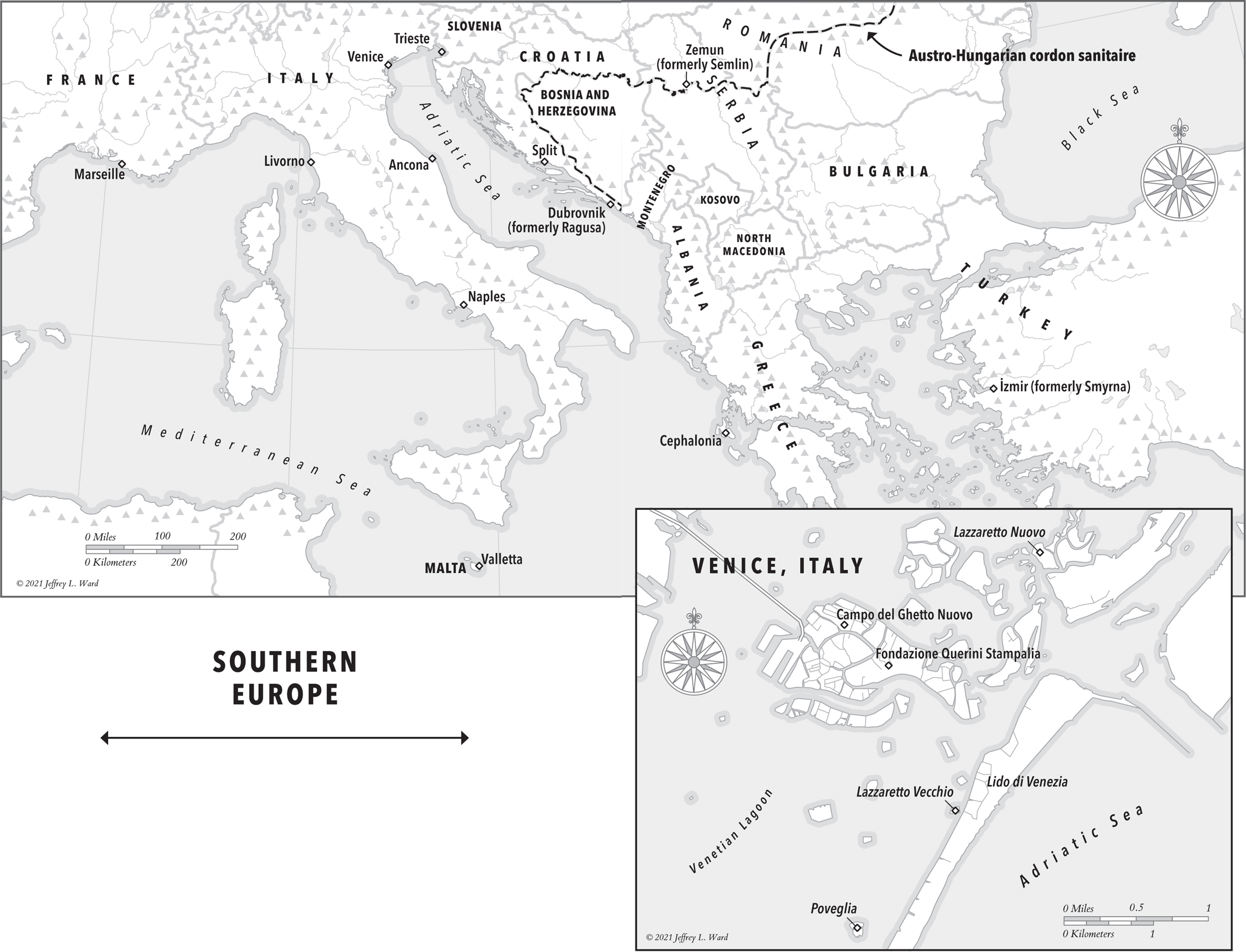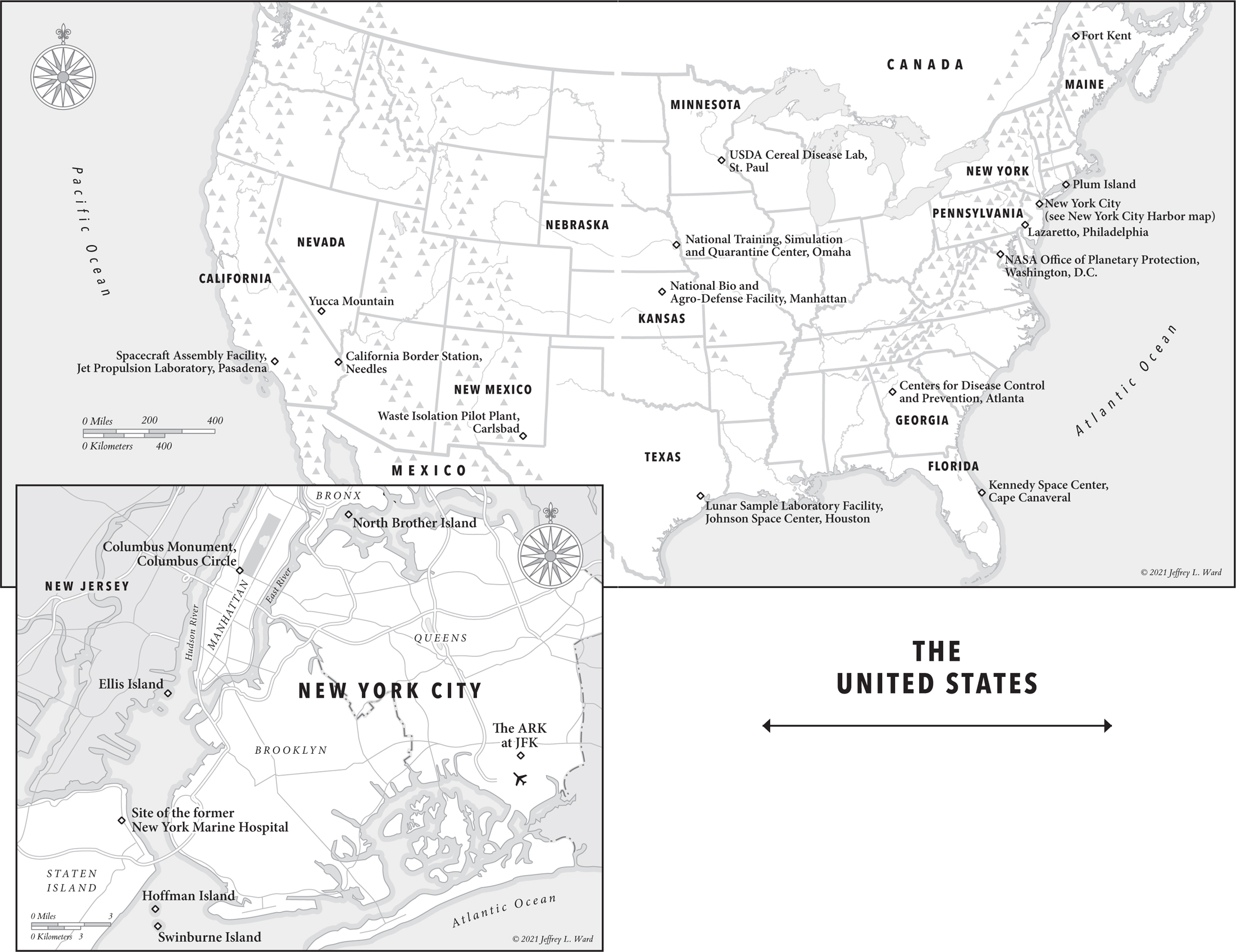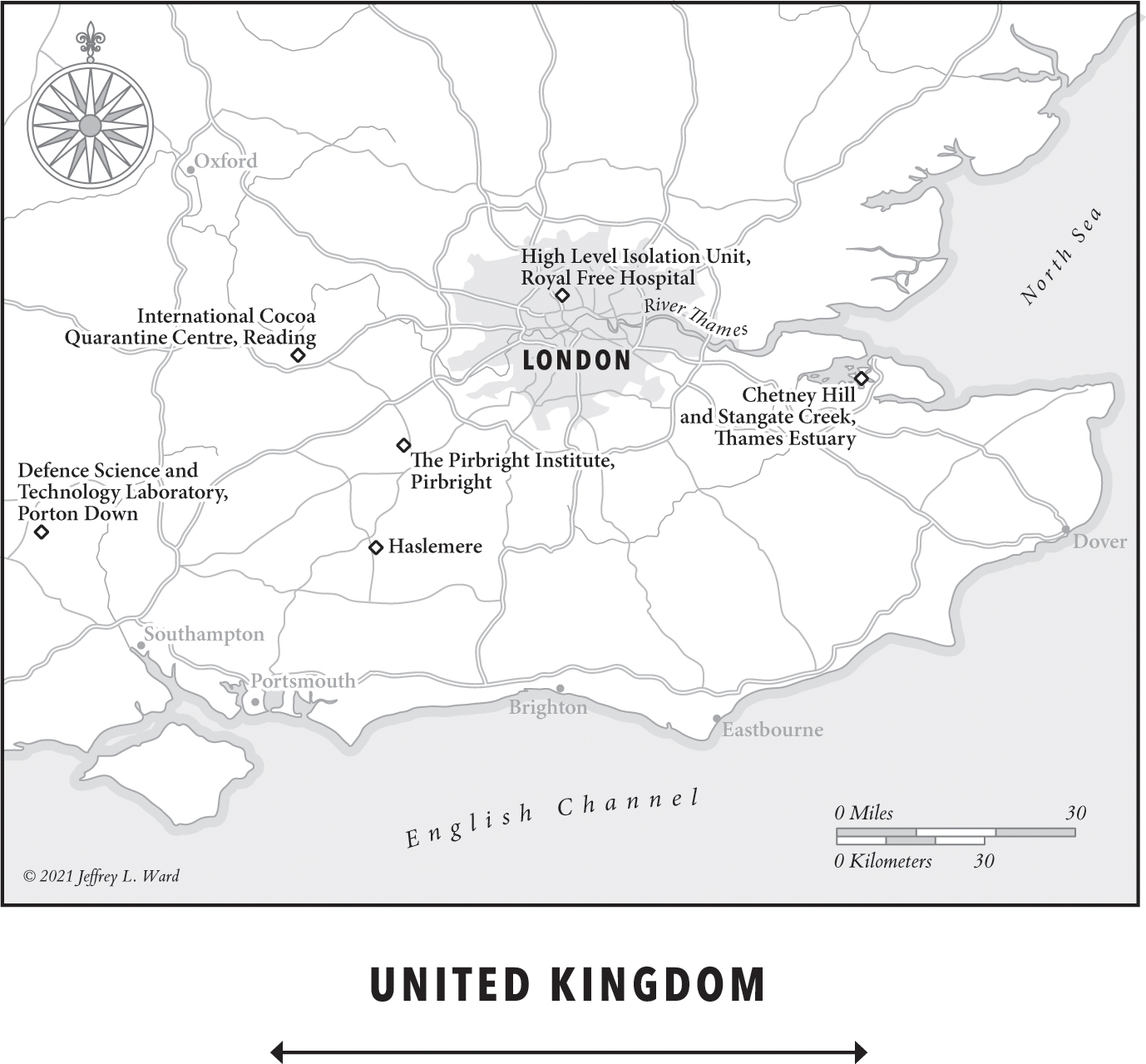The author and publisher have provided this e-book to you for your personal use only. You may not make this e-book publicly available in any way. Copyright infringement is against the law. If you believe the copy of this e-book you are reading infringes on the authors copyright, please notify the publisher at: us.macmillanusa.com/piracy.
On March 6, 2020, a King County, Washington, health department van pulled up in front of an Econo Lodge motel outside Seattle. An employee clad in white coveralls hopped out, grabbed tools from the back of his van, and proceeded to paint the motels still-glowing sign pitch-black. The red and yellow colors of the chains familiar logo quickly disappeared, replaced by a matte-black rectangle that loomed over the street like a pirate flag. Ominous, deathly, its former welcoming light now extinguished, the motel had become a quarantine facility.
The lo-fi nature of the motels transformation was an unsettling indicator of just how improvised and ad hoc quarantine preparations seemed to be when a new infectious diseaseknown as COVID-19first arrived in the United States. As this novel coronavirus spread exponentially and hospital beds filled up, public health officials realized that they had nowhere to put people who could not quarantine at home.
Instead, buildings such as this roadside motelpurchased by Washington State health officials for $4 millionwere hastily retrofitted, becoming part of the nations emergency medical infrastructure overnight. In this case, the motels rooms were already equipped with independent HVAC units, doors that opened to the outside, and seamless, easy-clean floors. All it took to complete the transformation was a coat of black paint.
That same week, a friend of ours invited us to join an international preppers list hosted on the encrypted communication app Telegram. The purpose of the list was allegedly to help its members prepare themselves and their families for what appeared to be an imminent national lockdown; there were tips for securing enough toilet paper, advice on baking bread, and tales of making a first-time handgun purchase.
In the many thousands of messages hosted by the group, posted by often-anonymous users from around the world, we saw a sign of things to come in terms of public perception of the coronavirus pandemic. Some members wondered aloud about imaginary connections between COVID-19 and 5G wireless technology; others began formulating a muddled conspiracy theory in which the billionaire Bill Gates planned to use a future vaccine to inject electronic nanoparticles into human subjects against their will. If there was any doubt that global health authorities had lost control of the information war before the pandemic had even really started, this Telegram group quickly dispelled it.
More striking to us than the groups embrace of misinformation and conspiracy theories was the profound, almost palpable fear of a coming quarantine. For members based in the United Statesa country whose popular identity has been constructed around notions of freedom of movement and individual libertypolitical fears of government overreach became fused with the morbid dread of a global plague. Every day, it seemed, the looming specter of quarantine crept closer, depicted as a dictatorship of doctors in which we would all be considered infectious until proven safe.
By this time, China was already several weeks into its own mass lockdown aimed at containing the novel coronavirus; tens of millions of people had been quarantined for potential exposure to COVID-19, entire cities forcibly isolated from the rest of the world. A popular view emerged in Western media during those early weeks that only an authoritarian government such as Chinas could even attempt such a thing.
Skepticism about U.S. quarantine capabilities was, in fact, warranted: as cases of the virus began to grow in number, the nations permanent federal quarantine infrastructure consisted of just twenty inspection stations at international airports around the country and a brand-new, twenty-bed unit in Omaha, Nebraska. This, the nations only federal quarantine facility, barely opened in time for COVID-19: after a lengthy construction process, it became operational on January 29, 2020. Nevertheless, nightly news reports and incendiary social media posts only confirmed for many members of this Telegram group that mass quarantine was imminent. Convinced that the government exercise of such extraordinary powers was potentially illegal and certainly un-American, they readied themselves to resist.
Even Chinese authorities seemed caught off guard by the scale of COVID-19. The New York Times described efforts to isolate or quarantine people in the city of Wuhanwhere the disease is believed to have originatedas a mass roundup marked by chaos and disorganization. Public health authorities were haphazardly gathering up sick patients, in some cases separating them from their families. Family members and close contacts of confirmed cases were also dispatched into centralized quarantine and observation facilitiesprimarily existing buildings, including stadiums, convention centers, and schools that had undergone emergency conversion into strange new types of frontline medical infrastructure.
Among these were so-called fever buildings and fangcang hospitals. Fangcanga name that in Chinese is a homophone for Noahs arkwere large temporary hospitals, often retrofitted sports and exhibition centers, to which people with mild or asymptomatic cases of COVID-19 could be sent, to isolate them from the community while supplying them with food, shelter, and social activities. Fever buildings were their dark cousins: entire housing complexes in which so many inhabitants had contracted the virus that authorities simply put a cordon around the entire structure. Large signs affixed outside warned healthy people to stay away. When converted facilities were not sufficient for the detention of tens of thousands of people suspected of exposure to COVID-19, however, Chinas famously efficient construction industry clicked into gear. In one case, a sprawling thousand-bed hospital made from modular architectural units was assembled in only ten days by workers continually checked for symptoms of coronavirus infection.
For the historically minded, these sights resonated with medical efforts of the past; the implementation of quarantine and isolation has always been a stimulus for creatively rethinking the built environment. For centuries, pandemic disease has inspired people to find new uses for old buildings or to invent new structures altogether. In sixteenth-century England, following ordinances proclaimed by King Henry VIII, the houses of people in quarantine had to be marked with long white poles attached to the exterior walls, like the quills of a porcupine, with clumps of straw or hay attached to the ends. These functioned as highly visible warning signs as well as inconvenient physical obstacles, encouraging pedestrians and carriages to avoid certain streets altogether.


